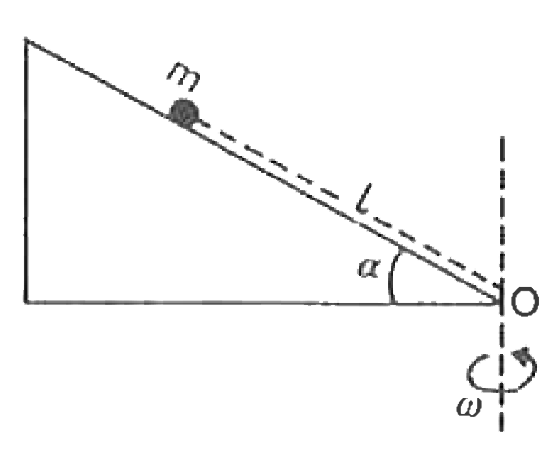Examples from BHARATI BHAWAN PHYSICS (HINGLISH) CENTRIPITAL AND CENTRIFUGAL FORCES for Class 11
| Class 11 | PHYSICS |
| Chapter | CENTRIPITAL AND CENTRIFUGAL FORCES |
| BHARATI BHAWAN PHYSICS (HINGLISH) | Examples |
| Medium | English |
| Academic Year | 2023-2024 |
Question 5
The CG of a loaded taxi is 1.5 m above the ground and the distance between its wheels is 2 m. What is the maximum speed with which it can go round an unbanked curved of radisu 100 m without being turned upside down ? What minimum value of the coefficient of friction would be needed at this speed ?View SolutionQuestion 9
Two balls of masses m1=0.5kgandm2=0.3kg are connected by a nonstretchable string and slipped on to a horizontal , light rod. The rod is rotated with ω=110 rpm about a vertical axis passing through its centre. Find the tension of the string and the distance of the masses from the axis of rotation if l=20 cm is the length of the string. Is the equilibrium of the balls stable ?
 View Solution
View SolutionQuestion 10
A cyclist rides along a circular path in a horizontal plane where the coefficient of friction varies with distance from the centre O of the circular path as μ=μ0(1−rR) where R is the maximum distance up to which the road is rough
Find the radius of the circular path along which the cyclist can ride with maximum velocity. What is this maximum velocity ?View SolutionQuestion 11
A particle of mass m=2 kg is suspended in a vertical plane by two strings - one horizontal and the other inclined to the vertical by α=30∘. Find the tension of the inclined string (a) an instant before the horizontal one is cut, (b) an instant after the horizontal one is cut.View SolutionQuestion 12
A particle moves with deceleration along a circle of radius R so that at any moment its tangential and normal accelerations are equal in moduli. At the initial moment t=0 the velocity of the point equals v0. Find (a) the velocity of the point as a function of t and s , (b) the resultant acceleration modulus as a function of v.View Solution
